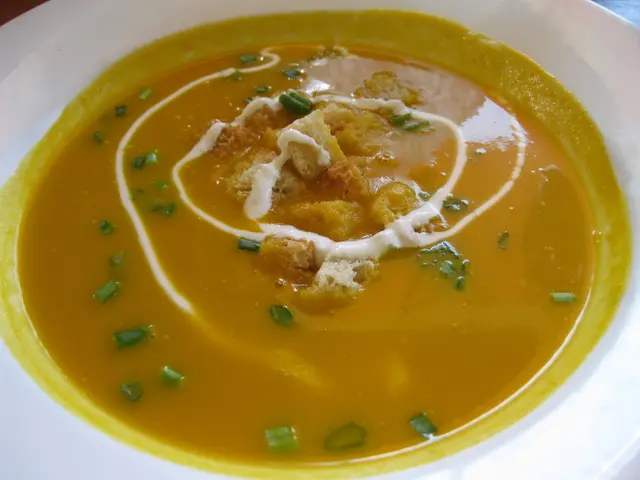Experiencing the World Beyond Sight: Depicting Reality Through Unseen Sensory Perceptions
Diving into the world of storytelling goes beyond the spectacle of sight. We've all experienced it - that childhood memory, not captured by a collection of visible images, but by the symphony of sounds, scents, and feelings. In this journey, we'll learn how to step beyond the visible and create writing that fully inhabits the multi-sensory world, not just the eyes.
Don't be fooled by the ease of visual description. Too much of it can make prose feel flat or repetitive. Instead, harness the power of other senses to create texture, mood, and emotional undertones.
The Sensory Ranks
Writers, like readers, often fall into this hierarchical order:
- Vision
- Sound
- Touch
- Smell
- Taste
However, when it comes to emotional recall, this order is often flipped. Smell and taste, tied to memory through the limbic system, can elicit powerful responses. Touch connects directly to intimacy, comfort, and danger. Sound builds space and tension. Vision, while essential, is only a part of the story.
Breaking the Sensory Mold
Expanding the sensory palette provides a host of benefits:
- Creating immersion: Readers are not just observers but participants in the scene.
- Building intimacy: Tactile and olfactory cues often evoke feelings of closeness.
- Signaling emotion: Sensory detail can express internal states nonverbally.
- Shaping tone: A scene that echoes with an icy wind and reeks of dampness will feel different than one filled with warmth and light laughter.
Speaking in Sounds
Sound does more than simply tell us something is happening. It creates rhythm, character, and mood. It provides context, often before sight can.
Crafting Effective Sound
- Ambient Sounds: Ambient noise like distant thunder or a distant crowd creates atmosphere.
- Character-based Sounds: How a character chews or breathes reveals their personality.
- Contrasted Sounds: An unexpected sound in a peaceful setting adds tension.
Example: Clicking, tapping, humming. The sounds became increasingly frequent like a drumroll leading to a crescendo of chaos.
The Forgotten Intimacy: Touch
Touch grounds the reader in physical experience. So often overlooked, it's one of the first senses we develop, and one of the most visceral.
Forms of Touch
- Temperature: Hot metal, cool stone, clammy skin.
- Texture: Silk sheets, sandpaper, cold marble.
- Weight and Pressure: A gentle touch on the shoulder, crushing weight.
- Movement: A light whisper in the ear, vibrations in the pocket.
Touch brings us closer - and sometimes, it violates us. Its raw power lies in its ability to imply physical proximity or distance.
Example: The rustle of paper, the crackle of a fire, the chill of an open window. Each detail conjured a specific image, a sense of being there.
The Shortcut to Memory: Smell
Smell bypasses logic and lands directly in the emotional brain. It's the sense most closely tied to memory, making it ideal for triggering flashbacks, subtext, or unspoken associations.
Utilizing Smell for Impact
- Memories Triggered: A scent can instantly transport a character back to a specific moment.
- Unease Built: The scent of decay can create discomfort rapidly.
- Setting Illuminated: Every location has a unique olfactory signature, increasing the depth and immersion of the setting.
Smell is often at its most powerful when used in conjunction with emotional context, not just as simple information.
Example: The scent of fresh baked bread, the warmth of a sun-kissed day, the bite of cold rain. These smells evoked feelings of comfort and nostalgia.
The Subtle, But Not Insignificant: Taste
Taste may seem insignificant in fiction, but it's a powerful mood-setter and intimacy cue. Taste can express class, comfort, illness, culture, or even trauma.
When to Use Taste
- Reflecting State of Mind: Food might taste dull when a character is depressed but rich and indulgent when they're in love.
- Triggering Memories: A specific dish might remind a character of someone gone or a moment past.
- Creating Intimacy: Taste is internal. To write it is to enter the body - exactly where emotional power resides.
Example: The dryness of dust, the grittiness of sand, the sweetness of a forgotten memory. Each taste conveyed a specific emotion.
Now it's your turn to craft your own sounds, scents, touches, and tastes. Delve deep into the world of the senses and discover the stories that lie waiting. Close your eyes, and write without the crutch of sight.
- The thrumming rhythm of a drum, the cacophony of a bustling market, the soft whisper of silk against skin - these sounds, sensations, and textures can be found in a day spent exploring the lively streets of a health-and-wellness retreat, immersed in practices that nurture mind, body, and spirit.
- The sharp tang of lemon zest, the soothing scent of lavender, the rich texture of chocolate fondant - these flavors and scents are not just elements of a fashion-and-beauty magazine spread, but also memories evoked by the aromas wafting from a kitchen where science meets cooking, creating dishes that nourish not just the body, but the soul.
- The weight of a silver necklace against my flesh, the roughness of a woven rug under my feet, the chill of an iced drink against my lip - these tactile sensations have become part of my lifestyle, reminding me of the importance of appreciating the world around me in its entirety, not just through sight, but through all the senses.








